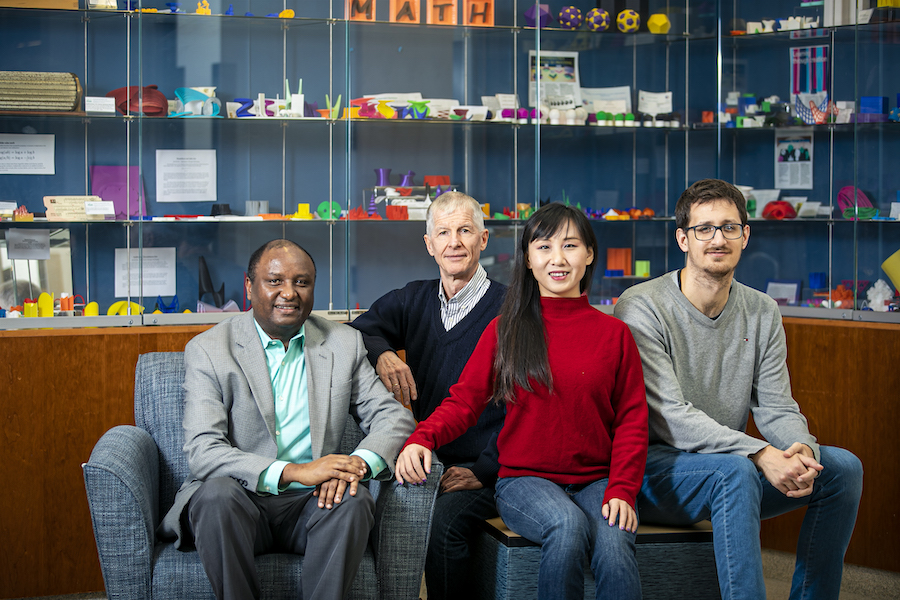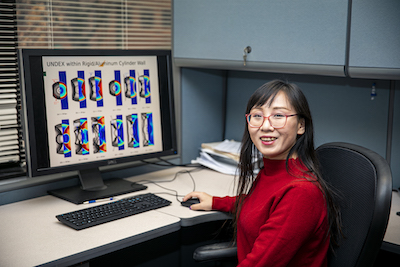A George Mason University interdisciplinary team is studying underwater explosions and their effects on civil engineering infrastructure with the support of a $1.5 million grant from Defense Threat Reduction Agency.

Lingquan Li, a postdoctoral research fellow, is working alongside Girum Urgessa of the College of Engineering and Computing, Rainald Löhner of the College of Science, and PhD student Facundo Airaudo.
“The sophisticated phenomenon in underwater explosions is important for government agencies interested in protective design,” said Li, who specializes in computational fluid dynamics and mathematics.
The team has run more than 100 test cases to study the structural response and the damage due explosions, Li explained. The resulting pressures and flow fields for different explosive yields and stand-off distances are provided to the Department of Defense.
Urgessa and Löhner are the co-principal investigators (PIs) on the project.
“[Girum] took more the structural part on it, and Lingquan and I did more the fluid part,” said Löhner, who is director of Mason’s Center for Computational Fluid Dynamics, where these experiments have been conducted. “So, we did the explosion in the water, and he did what happens when the shock wave hits the structure and how the structure [reacts].”
“We not only develop new numerical methods and new algorithms in order to compute these explosions, but we also delivered more than 120 results for different geometries, different loads, and different standoff distances,” said Löhner. “It has been extremely successful.”

Airaudo, who is an Institute for Digital Innovation Predoctoral Fellow, is simultaneously working on another project, Optimal HVAC Outlay to Minimize Pathogen Transmission. He and Li spend most weekdays in the center working on these projects.
“It's a good way to collaborate,” said Airaudo, “because she can show me what she's working on and I can just learn from what she's doing and help her a little bit. I can also show her what I'm working on, and she can give me tips as well.”
Airaudo is grateful he gets to learn from Dr. Li, he said, as she is part of a largely underrepresented group in science, technology, engineering and mathematics (STEM).
“For me personally, [this project] means a lot because research is what I'm interested in; it is the thing I'm best at,” said Li. “I don't see a lot of female researchers in my field of study. I don't know why that is, but it is very important to be inclusive because we need people from different backgrounds [and] all kinds of perspectives to [solve these research problems].”
Mason’s College of Science is above the national average in the number of women enrolled in STEM degree programs. Of the students enrolled at COS, 62 percent of undergraduates and 50 percent of the graduate students are women, according to Dean Fernando Miralles-Wilhelm, who presented the numbers at a Board of Visitors meeting in December. “Quoting President [Gregory] Washington, the College of Science already looks like the rest of the country will look in 30-40 years.”
